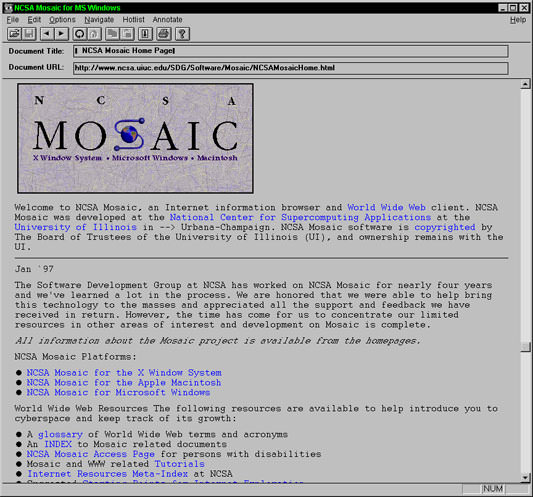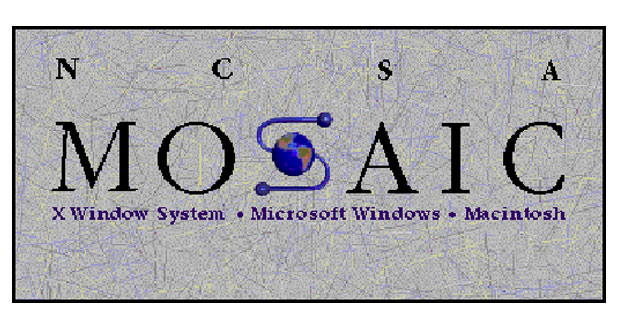Mosaic, the first successful web browser is 25 years old
Considered the first browser to have reached a certain popularity in the mass audience, Mosaic has very recently turned off its twenty-fifth candle.
The National Center for Supercomputing Applications (NCSA) launched Mosaic 25 years ago, exactly on April 22, 1993. It was the first browser to exploit some of the key elements in web browsing, software that shaped the way we would consult the World Wide Web over the next 25 years. It reaches a quarter of a century one of the most iconic software in the history of computing, often considered the first graphic browser in the world.
In fact, before Mosaic there were WorldWideWeb, Erwise and ViolaWWW, but Mosaic had some fundamental innovations: it supported web pages with both images and text, not requiring images to be reproduced on other windows; it was also compatible with several protocols, such as File Transfer Protocol (FTP) and Network News Transfer Protocol. The success with the mass audience has also been attributed to its simplicity of use.
 Some flashes of genius are still exploited today: the links were marked in blue and underlined, in order to be identified and selected more easily; and you could go back to previously visited pages with a big button on the top of the interface. Among the many reasons for its success the intuitive UI, its reliability, the port for Windows and simple installation, in addition to the fact that it was free.
Some flashes of genius are still exploited today: the links were marked in blue and underlined, in order to be identified and selected more easily; and you could go back to previously visited pages with a big button on the top of the interface. Among the many reasons for its success the intuitive UI, its reliability, the port for Windows and simple installation, in addition to the fact that it was free.
At the time of its release, NCSA Mosaic was available only on Unix systems, and it had spread mainly to universities and institutions, but not to homes where Microsoft’s operating system was more widespread. The versions for Windows and Mac came only at the end of 1993 (in December) with a non-commercial license that allowed users to download the software for free. The installation was so simple that anyone could do it.
At the head of the project was the popular Marc Andreesseen, who left NCSA in 1993 to found Mosaic Communications with Jim Clark, co-founder of Silicon Graphics. The company later became Netscape Communications, owner of the Netscape browser, which in the mid-1990s had managed to monopolize the entire industry. Netscape then lost the ” first browser war ” against Internet Explorer, and the rest is today’s story.

